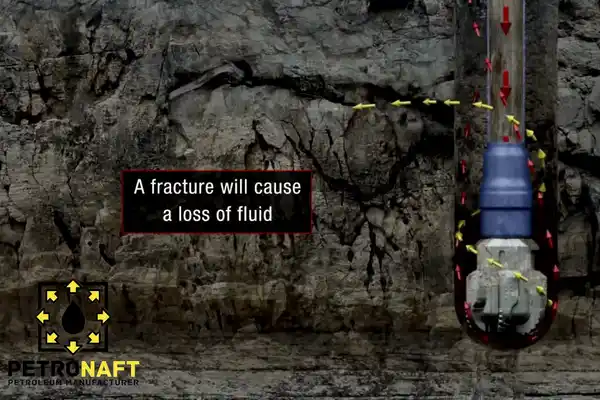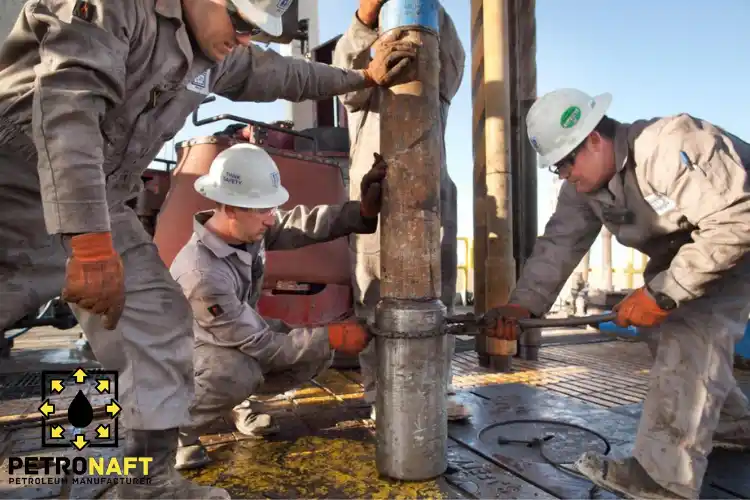What exactly is meant by the term “fluid loss in drilling” when referring to drilling mud?
The waste of drilling mud that occurs due to fluid loss in during the drilling operation. The act of drilling a wellbore is made easier by the use of a fluid called drilling mud, which also makes it feasible to drain waste from the hole. In the oil and gas industry, drilling muds are most commonly used for drilling deep wells. There are many different types of drilling muds, each of which can be classified according to the characteristics that distinguish them from one another.
This chemical has a tendency to produce issues as it travels through the fluid loss in drilling mud because it enters the voids that are present within the formation. This issue manifests itself most often in the oil and gas sectors as well as in the first phases of well drilling. The deeper the well gets, the more difficult the drilling process is, and as a consequence, fluid loss in drilling mud will become a more significant concern.
It is crucial to develop ways to reduce this fluid loss for a variety of reasons, and many big oil corporations across the globe spend enormous amounts of money each year trying to find better solutions in this sector. Many advancements have been achieved in this area over the last few years as a result of the use of nanoparticles and gilsonite for the purpose of controlling the properties and features of drilling fluids.
Issues that arise as a result of fluid loss in drilling mud:
Fluid loss causes numerous complications. Problems such as well eruption, pipe jamming, loss of a huge volume of drilling mud, damage to the formation, and other incidents of a similar kind are examples of the types of issues that can arise in oil and gas industry wells and lead to significant financial losses.
What factors contribute to the loss of fluid in drilling mud?
Fluid loss the pressure differential between the mud and the formation can cause fluid to develop, and as a consequence, the fluid can cause the pipes to get trapped in the well. A problematic situation that has to be remedied by means of an expensive process known as balance finding. In addition to this, the loss of fluid might result in the movement of minute mud particles into the pores of the formation.
This problem also causes the impermeability of the well wall to decrease, which in turn raises the likelihood that it will be destroyed. Fluid loss in drilling can also lead to a variety of chemical reactions, which in turn can lead to a variety of issues for the well as sediment is formed.
Various forms of fluid loss in drilling fluids
Fluid loss divides drilling fluids into four general categories based on its severity. In case of fluid loss less than 10 bbl/hr, it is called leakage. If this number is between 10 and 100, It is called fluid loss for short. Also, if this number is between 100 and 500; It is referred to as complete fluid loss. Finally, fluid loss more than 500 bbl/hr is called complete fluid loss in drilling mud.

Additionally, there are a variety of models for fluid loss that take into account the kind, magnitude, and location of the event. Because of this, having knowledge about the nature of the fluid loss as well as its location may be extremely helpful in selecting the approach that will be most successful in preventing it. Checking the data from neighboring wells, analyzing the changes that have taken place in the formation, and using a variety of charting techniques are the ways in which the information connected to the location of the fluid loss is obtained.
Controlling fluid loss naturally makes use of maintenance and repair techniques, just as it does in every other sector of the economy. This indicates that there are strategies that can be used to systematically regulate the presence of fluid loss on a regular basis and prevent it from spreading. These approaches should be used in the process of drilling deep wells.
How can we prevent more fluid loss?
There are a lot of different things that might cause fluid loss to take place. Among these factors are the lithology and kind of formation that is currently being drilled, as well as the variables of the drilling process, such as pressure and pumping rate, and other properties of drilling mud. It should go without saying that the reasons of fluid loss are unclear and very difficult to regulate in the majority of situations, regardless of the scenarios that have been stated.
Changing the characteristics of the mud is the typical method used to control fluid loss. The most significant controllable component in this sector is the weight of the flowers, as well as their concentration, chemical qualities, and other features. Gilsonite is one of the materials that helps to prevent fluid loss; if you would like more information on this topic, you can get in touch with our specialists.
Purchasing from Petro Naft
For more detailed information and to purchase the product discussed in this article, please visit the dedicated product page below. Alternatively, use the various communication channels provided on our site to register your purchase inquiry or take advantage of our expert guidance.
Prepared by the PetroNaft Co. research team.



